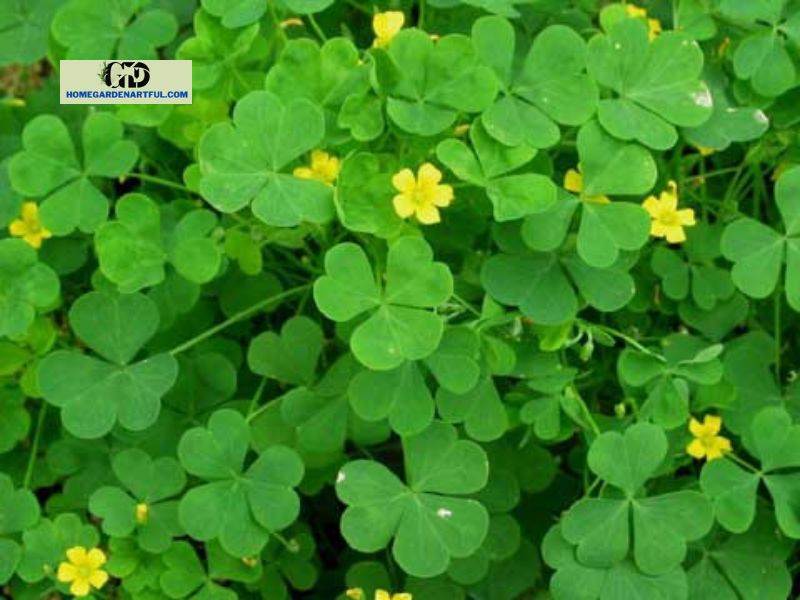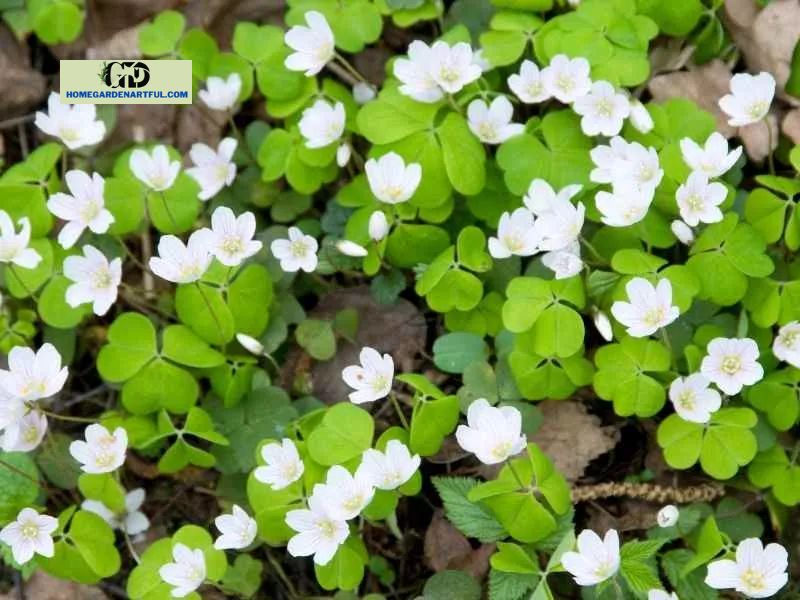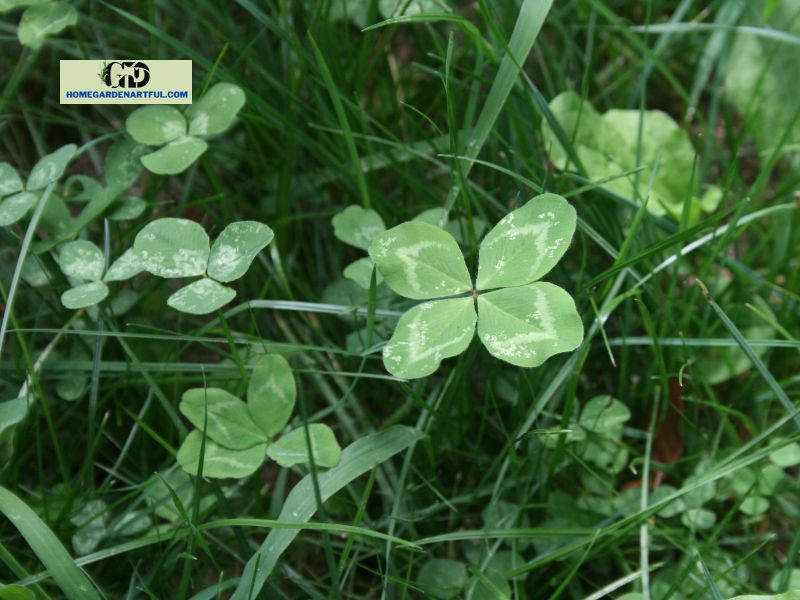Wood Sorrel vs Clover: Wood sorrel and clover are sometimes confused with one another because they look so similar at different periods of the year. While clover is widely regarded as a useful nitrogen-fixing plant, yellowwood sorrel is a tenacious weed. So, what’s the difference, and how can you determine which ones you have in your garden?
Yellow wood sorrel is a weed distinguished by heart-shaped leaves, vivid yellow blooms, and okra-like pods that disperse seeds far from the plant. Clover, on the other hand, has rounded leaves as well as bushy red or white blooms, and it is useful in gardens and livestock.
The remainder of this article will go into the characteristics of each plant, how to recognize which one you’re dealing with, the qualities of each, and the way to decide whether or not it’s a plant you want on your land. Discover at homegardenartful.com!
What Exactly Is Wood Sorrel?

This plant is thought to be indigenous to North America. Oxalis stricta is the scientific name, although it is generally known as wood sorrel or typical yellow Oxalis.
While yellow wood sorrel has lovely flowers, it is an unwelcome sight in most gardens. The seed pods of the plant spread widely, allowing it to quickly spread over garden beds and lawns.
It is also harmful if ingested in big quantities. The plant’s genus name, Oxalis, is derived from the Greek word oxys, which means “sour.” It can induce stomach discomfort in both humans and animals if consumed in big quantities, so eat it sparingly and keep animals away from it.
What exactly is a Clover?
Because their leaf structures are similar, yellowwood sorrel and clover are frequently confused. Clover, on the other hand, is a completely distinct plant. Clover comes in two varieties: white and red. These names are derived from the color of the plant’s blossom.
Clover is a nitrogen-fixing plant, according to The University of Georgia Extension. This indicates that the plant aids in the availability of atmospheric nitrogen to the soil, making it more productive. This feature then benefits surrounding plants, making clover an excellent companion plant for grasses along with other nitrogen-loving plants.
C lover is also an excellent fodder for animals. Animals only eat the leaves and blossoms of plants, inflicting less damage and allowing for faster recovery. It can also dissuade animals from eating other harmful grasses; cattle prefer the sweet taste of clover and will consume less toxic plants as a result.
The Potential Advantages of Yellow Wood Sorrel
While many gardeners regard wood sorrel as a nuisance, we should be aware of certain potential benefits of Yellow Wood Sorrel.
In tiny amounts, the entire wood sorrel plant is edible. It is frequently used to prepare tea or to season soups and salads. Yellowwood sorrel, on the other hand, should not be ingested if the person has kidney difficulties or a history of joint inflammation.
When ingested in high quantities, the oxalic acid present in yellow wood sorrel can be harmful, but when used sparingly, it has medical benefits and is frequently utilized for fevers, urinary tract infections, and a variety of other diseases.
The Advantages of Growing Clover

Clover offers a long range of advantages that will appeal to most gardeners. I’ve listed a handful of the most typical applications for this wonderful plant below.
- Feed for livestock
- Moisture retention groundcover
- Living mulch for weed control
- Soil nitrogen fixer Food for pollinators
- Many other plants benefit from having this plant as a companion.
- Fertilizer should be chopped and dropped.
- In small concentrations, edible
- It is regarded as a medicinal plant.
Clover and horse toxicity
It should be noted that clover can be infected with a fungus known as “black patch” (Rhizoctonia leguminicola), which is harmful to horses. This fungus, according to The Michigan State Extension, can induce excessive drooling. This is a non-life-threatening condition.
A different species of clover, on the other hand, may pose more serious problems for horses. This plant, also known as alsike clover, has been linked to big liver syndrome and photosensitization. Big liver syndrome results in liver failure and can be deadly. Sunburn-like lesions, diarrhea, or colic may result from photosensitization.
Identifying whether you have Wood Sorrel vs Clover

If it’s spring or summer, the blossoms are the easiest method to know which plant you have. You’ve got clover if they’re red or white and bushy. Yellow wood sorrel has exquisite yellow or orange flowers.
Even if the plants aren’t blooming, you can tell which ones are in your yard. Examine the leaves to see if they are heart-shaped or rounded off. Yellow wood sorrel has heart-shaped leaves, whereas clover’s leaves are more rounded.
Tips for getting rid of yellow wood sorrel in your yard
The key to getting rid of yellow wood sorrel in your yard is to act quickly. This plant will grow even stronger the next year after going to seed. If you can remove the plant and its roots before it flowers, you’ll be able to make good headway in removing it.
If you manage to pull wood sorrel before it blooms, you can compost it and turn it into soil. It is critical to only do this with plants that have not yet formed seeds so that the plant does not sprout in the composted soil.
Tips for getting rid of clover in your yard
While clover can be a useful part of a yard garden, there may be times when you wish to remove it, such as if you have horses and are concerned about the clover causing illness. Pulling clover by hand is a fantastic technique to eradicate it, just like yellow wood sorrel.
If there is too much clover to remove by hand, you can starve it of oxygen and sunshine. Cover your clover patches with wood, cardboard, or plastic sheeting in the fall. Make certain that this covering is securely fastened so that it does not blow away in the wind. The clover will be extinct by the next summer.
Should I destroy yellow wood sorrel and clover with chemicals?
Natural weed control methods are the safest, however, if you don’t have any animals on your property, you can use chemicals to kill your clover or yellowwood sorrel. Keep in mind, however, that commercial weed killers may also kill any other neighboring plants as well as helpful microbes on the soil’s surface.
Final Thoughts
While yellow wood sorrel and clover appear extremely similar in the fall and winter, they are distinct plants with distinct functions. Both species can be dangerous if consumed in high quantities, but clover has various advantages. Knowing the species you have in your yard is a crucial component in deciding whether to keep or remove it.


